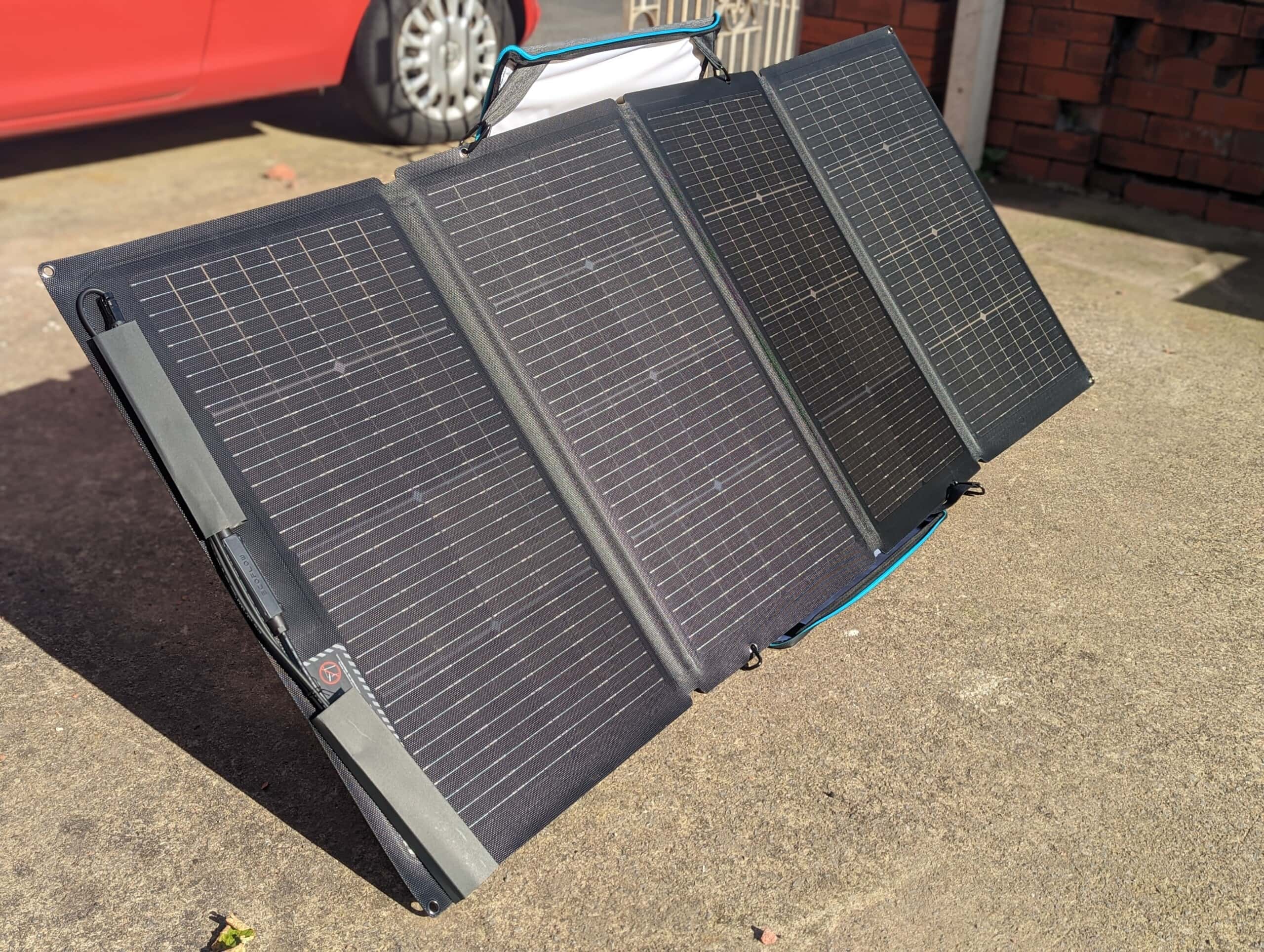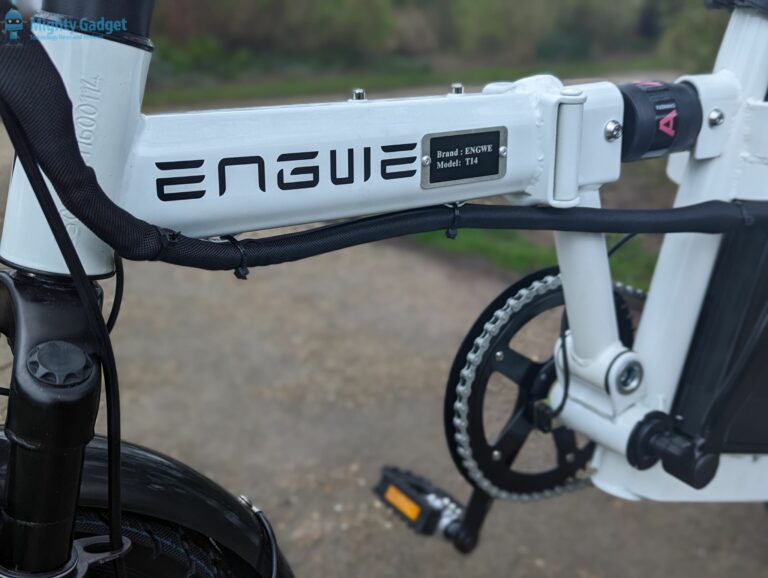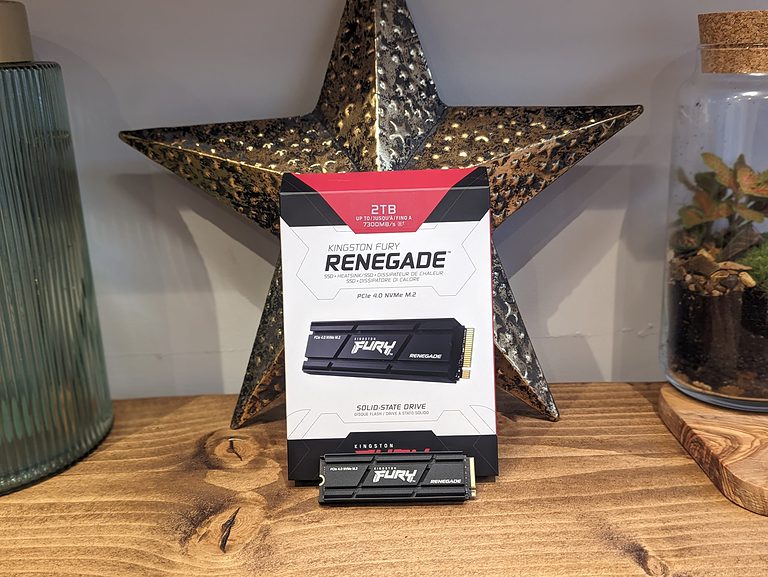Any links to online stores should be assumed to be affiliates. The company or PR agency provides all or most review samples. They have no control over my content, and I provide my honest opinion.
During my review of the EcoFlow RIVER 2, I was also testing the 220W bifacial solar panel. This is a unique solar panel compared to most of the others on the market.
As the name suggests, there are solar panels on both sides. The rear side allows the panel to capture additional ambient light.
It is not the most efficient way to collect light, but EcoFlow claims it will capture up to 25% more solar energy if you conveniently place it on a mirror. For more realistic usage, the panel will collect nearly an extra 10% on both cement and sand. This drops down to 7.2% for grass.
EcoFlow doesn’t appear to charge you significantly more for the additional panels on the rear. This 220W panel is £549 while the 400W panel is £999, so the price scales correctly with the solar input, even though the 400W model is only one-sided.
Specification
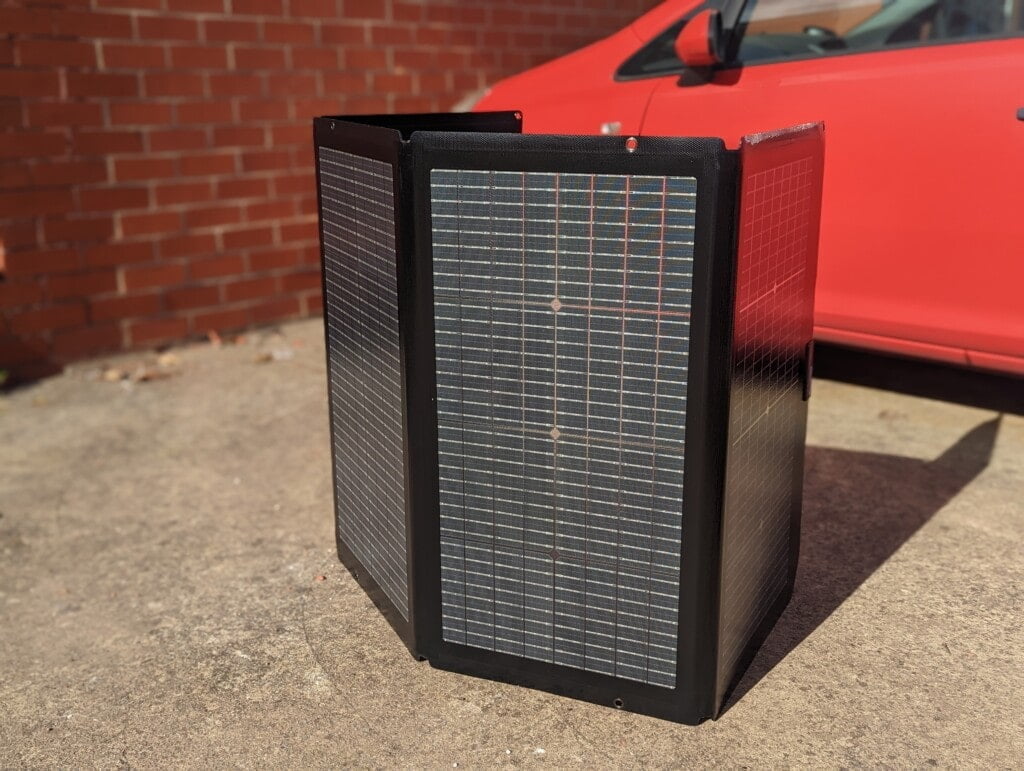
- Rated Power: 220W Front Side/155W Rear Side
- Efficiency: 22-23%
- Open Circuit Voltage: 21.8V (Vmp 18.4V)
- Cell Type: Monocrystalline Silicon
- Short Circuit Current: 13A (Imp 12.0A) Front Side/ 8.8A (Imp8.4A) Rear Side
- Dimensions: 82*183*2.5cm (32.3*72.0*1.0 in)
- Weight (Solar Panel): Approx. 9.5kg (20.9lbs)
EcoFlow 220W Bifacial Solar Panel vs 400W Solar Panel
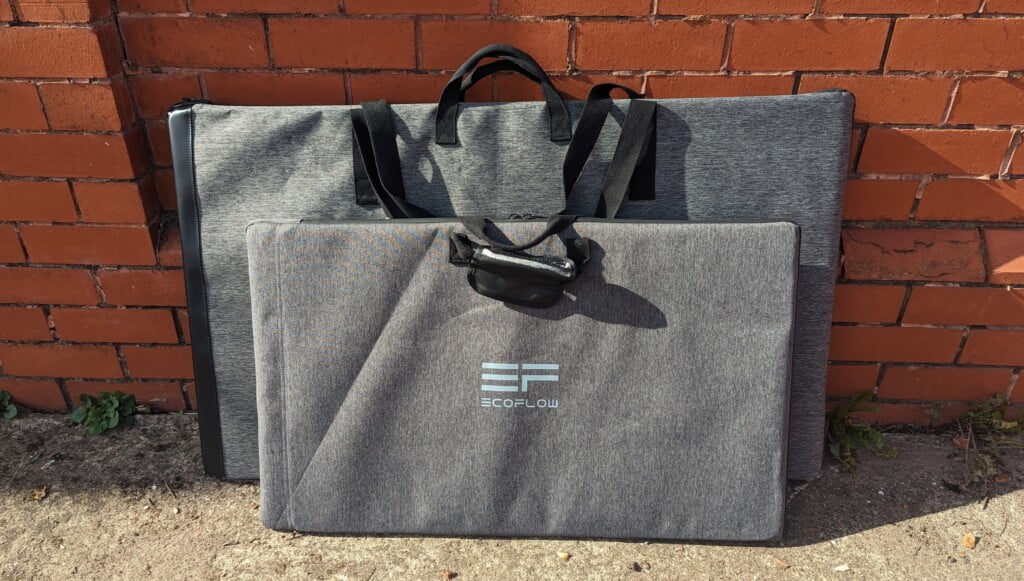
As I have both the 220W and 400W solar panels, I thought it would be good to set them both up so you have an idea of how much difference there is in size.
The 220W weighs in at 9.5kg (solar panel only) while the 400W model is 16.0Kg (19kg with case). Subjectively, the 400W panel feels heavy to carry. Due to its dimensions, I also have to bend my arm a bit to avoid it hitting the floor, increasing the perceived weight. The 220W model feels like carrying a bag of shopping, you can feel the weight, but it is not an issue.
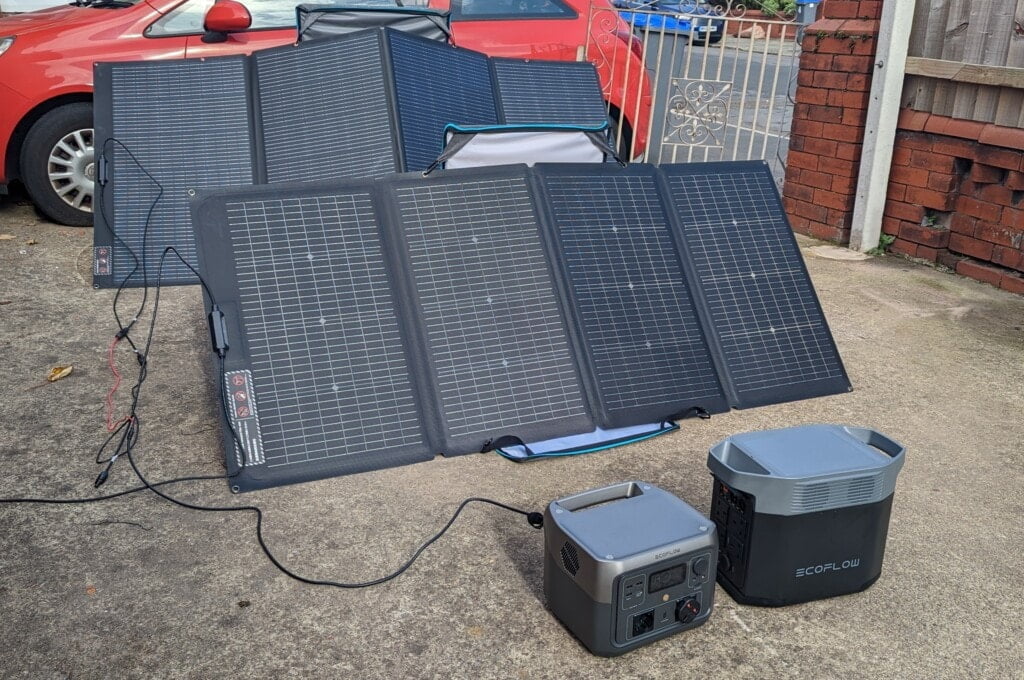
Set Up
The overall dimensions and weight of this panel make it much easier to handle than the 400W panel. Just carrying the 400W panel feels a bit awkward due to the size and weight, whereas this is much more convenient.
Setting it up is also a lot easier. The unfolded dimensions are much smaller, as is the weight.
The way EcoFlow uses the carry case as a stand takes some getting used to, but it works effectively, albeit it is slower than setting up smaller panels like the SolarSaga 100W.
Performance with EcoFlow RIVER 2 MAX and DELTA 2
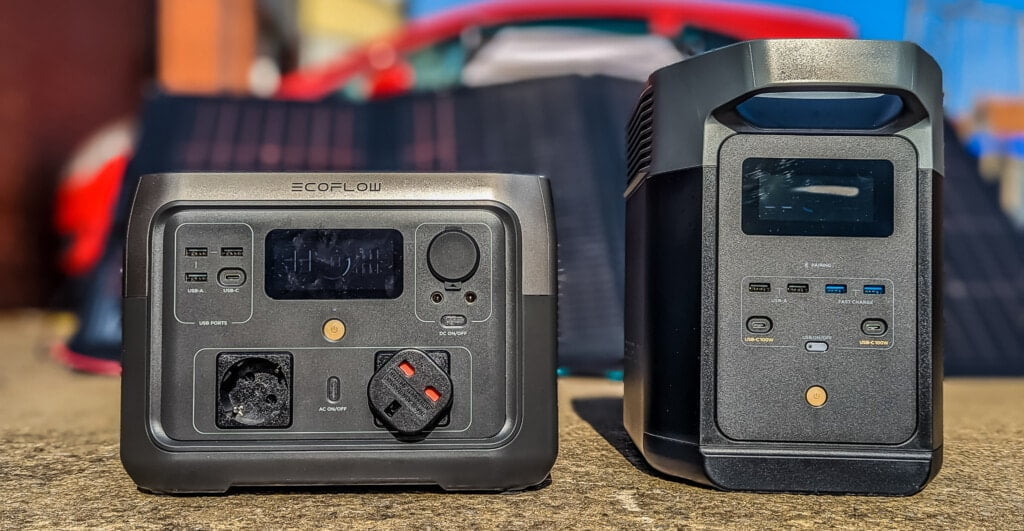
The weather hasn’t been great in the north of the UK recently. We have had a few days of partially cloudy weather where I have been able to test things. Partially cloudy is probably the most likely scenario throughout the year in the UK, so this is perhaps the most realistic test environment.
The EcoFlow RIVER 2 MAX has a maximum input of 220W, and this is the peak input I managed to achieve using the 220W bifacial.
While this can capture 220W on the primary side, and 155W rear side, the peak I saw on the EcoFlow DELTA 2 was also 220W. This is excellent, considering the peak I have seen on the 400W panel is about 320W.
While I can’t be sure the light intensity was the same in both scenarios, in theory, if I had two of the 220W panel in series, I should have hit 440W. That is 37.5% more than the 320W I have achieved on the 400W panel, yet the cost of two 220W panels is just 10% more.
As you’d expect, when the clouds cover the sun, the solar input drops dramatically. I’d say it would drop by around half most of the time.
Price and Alternative Options
The EcoFlow 220W Bifacial Solar Panel is priced at £549.00, making it a little over half the price of the 400W solar panel but less than twice the price of the 110W solar panel:
In price order:
- EcoFlow 400W Solar Panel – £999
- EcoFlow 220W Bifacial Solar Panel – £549
- EcoFlow 160W Solar Panel – £379
- EcoFlow 110W Solar Panel – £319 (Currently £289)
| Preview | Product | Rating | Price | |
|---|---|---|---|---|

| ECOFLOW 400W - Solar Panel | Buy on Amazon | ||

| EcoFlow 110W Solar Panel Charger | Buy on Amazon |
I was curious about the price vs performance, so the cost per watt is:
- EcoFlow 400W Solar Panel – £2.5
- EcoFlow 220W Bifacial Solar Panel – £2.5
- EcoFlow 160W Solar Panel – £2.37
- EcoFlow 110W Solar Panel – £2.63 (and that’s the discount price of £289)
Overall
I personally prefer the EcoFlow 220W Bifacial Solar Panel to the 400W panel. While I haven’t tested this scenario, I think I would prefer to have two 220W bifacial panels running in series than the single 400W panel. You’d obviously have two panels to carry around and set up, but I think the overall dimensions and weight of each individual panel make it easier to work with.
Two 220W bifacial panels will cost about 10% more than a single 400W panel (and cost the same per watt). In theory, it should provide superior performance as you have the 220W primary side and a 155W rear side. In my testing, I experienced up to a 37.5% difference.
I assume having panels in serial will scale at a linear rate, and if so, my testing would indicate that you’d would get better output with two of these.
You’d also have the flexibility of just using one panel when you want a bit more portability.
Of course, if you have an EcoFlow power station that can accept 800W+ solar input, then multiple 400W panels are going to become more appealing than multiple 220W panels.
EcoFlow 220W Bifacial Solar Panel Review Rating
Summary
The EcoFlow 220W Bifacial Solar Panel is a superb solar panel. It is easier to set up than the impressive 400W, and you get more bang for your buck with the abient light side pushing the solar input higher than you would get from a single-sided panel.
Overall
95%-
Overall - 95%95%
Pros
- Improved performance vs one-sided panels and at no additional cost in comparison
Cons
- A bit fiddly to set up using the bag/stand
I am James, a UK-based tech enthusiast and the Editor and Owner of Mighty Gadget, which I’ve proudly run since 2007. Passionate about all things technology, my expertise spans from computers and networking to mobile, wearables, and smart home devices.
As a fitness fanatic who loves running and cycling, I also have a keen interest in fitness-related technology, and I take every opportunity to cover this niche on my blog. My diverse interests allow me to bring a unique perspective to tech blogging, merging lifestyle, fitness, and the latest tech trends.
In my academic pursuits, I earned a BSc in Information Systems Design from UCLAN, before advancing my learning with a Master’s Degree in Computing. This advanced study also included Cisco CCNA accreditation, further demonstrating my commitment to understanding and staying ahead of the technology curve.
I’m proud to share that Vuelio has consistently ranked Mighty Gadget as one of the top technology blogs in the UK. With my dedication to technology and drive to share my insights, I aim to continue providing my readers with engaging and informative content.
Last update on 2025-07-03 / Affiliate links / Images from Amazon Product Advertising API

